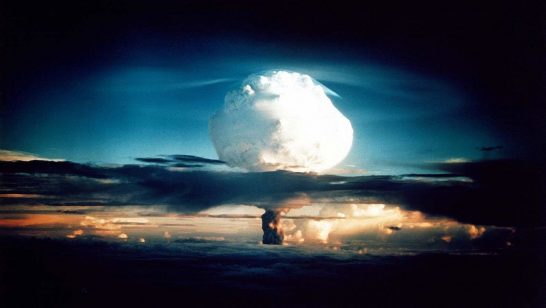
Every time an NPT Review Conference (RevCon) ends without a final consensus document, it is seen as a serious failure and a sign that the Treaty may be falling apart. So far, this has been an exaggeration.
Expectations were already low before this year’s RevCon ended without agreement. It is clear that the NPT has been under pressure for a long time. State parties have been disappointed with the Treaty for over two decades for diverging reasons: many want more disarmament, others want more effective non-proliferation. Since 1995 every RevCon has triggered a combination of hope and fear, later followed by disappointment.
The undertakings that secured the indefinite extension of the NPT in 1995 have been delayed or unfulfilled: the Fissile Material Cut-Off Treaty (FMCT), the Comprehensive Test Ban Treaty (CTBT), the disarmament objectives and the Middle East agreement. Similarly, after 2000 all of these and several additional agreements have been left hanging: the operational status of nuclear weapons, their diminishing role, tactical weapons, the Conference on Disarmament (CD) process. This has bred frustration amongst the Non-Nuclear-Weapon States (NNWS), for whom the slow reductions in nuclear weapons numbers can’t satisfy. For the NNWS, it doesn’t matter much whether present Nuclear-Weapons States (NWS) have 20,000 or 10,000 warheads between them.
Despite the talk of the NPT being in a crisis, there are no criteria against which success or failure of the Review Conferences can be measured. The RevCons of 1980, 1990, 2005 and 2015 ended without agreement (”failures”), whereas those of 1975, 1985, 1995, 2000 and 2010 produced consensus documents (”successes”). But there is no discernible correlation between those outcomes and what happened afterwards in nuclear weapons policy and politics.
This doesn’t mean however that NPT Review Conferences are unimportant.
Can we know what a consensus agreement is worth? No, because it is impossible to know whether promises and undertakings will be upheld or not. Consequently, it is also impossible to know whether it is good or bad to get a consensus outcome that most governments don’t like, as is most often the case with hard-fought compromises. Again this year, delegations and governments were genuinely unsure. Are principled substantive positions better in the long run (even with failed conferences and no agreements) than pragmatic and practical compromises? Nobody can know, since nobody knows whether the compromises will be adhered to.
Let’s say that the next NPT RevCon in 2020 ends in “failure”. That would be the first time that two consecutive RevCons crash. Will that be disastrous? My tentative answer would be probably not in the short term, but possibly in the longer. At the very least, two consecutive NPT non-agreements would make all multilateral approaches to the nuclear-weapons regime much more difficult to manage, perhaps impossible. This pertains not only to disarmament but also to the most pressing non-proliferation problems, such as Iran and North Korea.
It is possible that the longer-term fate of the NPT will be viewed differently before the next Review Conference. The frustration that has built up among NNWS may result in unexpected developments taking place before 2020.
Behind the sour mood and irritated exchanges that permeated last month’s conference, one could sense that a line had been crossed – that states parties were approaching a point where their differing views might be impossible to bridge, not only now but also in future conferences. “Forget step-by-step and incremental solutions, now we’re talking about a monopoly on ultra-violence.” That’s what it sounded like at times. “And by the way, you propose incremental steps, and then you block these steps? What’s that?”
Behind such sentiments, every NPT delegation knows that very little will change until relations between the NWS have improved considerably. Significant disarmament will not happen in the present climate.
So the most pressing question now, after the RevCon breakdown, is how the NNWS manage their disappointment and what conclusions will they draw about any future strategy, especially regarding disarmament.
The formal reason for failure to achieve a final consensus document was that the Middle East WMD-free zone process within the NPT is in disarray. Arab states’ attacks on the Finnish mediator left a bad taste and will not make it easier to find new help in bridge-building. Egypt may take the issue to the UN General Assembly, a move that most probably will not untie knots or generate tangible progress.
The future of the Humanitarian Initiative is quite unclear at present. It is possible that some states will initiate a process outside the NPT, the CD and the UNGA, aiming at drafting a document prohibiting the possession of nuclear weapons, not involving the five NPT nuclear states or the four outside the Treaty. The underlying hope of the states behind the initiative would be to create a new normative environment for nuclear weapons politics. A ban, in their view, would wipe away the legitimacy of weapons possession and the political value of owning them. The group of countries led by Austria hinted at this when they spoke in the final session about the need to overcome “a reality gap, a credibility gap, a confidence gap and a moral gap”.
A much less dramatic line of action might be to start an open-ended working group on nuclear disarmament tied to the UN General Assembly and involving all interested states, including the nine weapons possessors. The group would be consensus-based, thereby almost guaranteeing that concrete disarmament action would not be forthcoming. On the other hand, proponents argue, a process can lead off in unexpected directions.
A ban process and an UNGA process are not mutually exclusive. Both can happen before the next NPT Review Conference.
In any case, there is the prospect that the NPT landscape in five years may look quite different from today.
The opinions articulated above represent the views of the author(s), and do not necessarily reflect the position of the European Leadership Network or any of its members. The ELN’s aim is to encourage debates that will help develop Europe’s capacity to address the pressing foreign, defence, and security challenges of our time.



